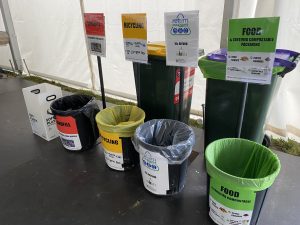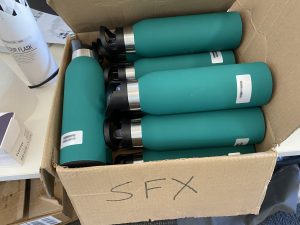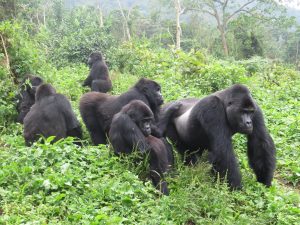Disney Champions Conservation with Kingdom of the Planet of the Apes

Environmental Sustainability & Nature
October 3, 2024
20th Century Studios’ Kingdom of the Planet of the Apes, the latest installment in the beloved cinematic franchise, serves as a reminder to conserve and protect gorillas from habitat loss, poaching, and climate change, and exemplifies The Walt Disney Company’s commitment to supporting a healthier planet for both people and wildlife. Disney placed its sustainability efforts at the forefront of film production, aligning the film’s theme of survival and nature with real-world support for environmental sustainability and nature conservation.
Here are three ways Kingdom of the Planet of the Apes demonstrated Disney’s commitment to the environment:
Disney Diverts Production Waste from Landfills
Instead of throwing everything away into one bin, waste diversion involves recycling, composting, and/or reusing materials to help reduce greenhouse gas emissions, disposal costs, and landfill use.

For Kingdom of the Planet of the Apes, this meant separating waste into five categories: landfill, donation, food, recycling, and “return and earn.” The crew donated items once destined for landfills to local charities for further use, and products that could be recycled in exchange for funds, such as aluminum cans and plastic bottles, were sorted into “return and earn.” Proceeds from “return and earn” were donated to an organization in Australia dedicated to the conservation of wild orangutans and their rainforest habitat.
Disney Reduces Carbon Footprint and Conserves Water
To avoid using single-use plastic bottles and to reduce their carbon footprint, the Kingdom of the Planet of the Apes production team purchased reusable metal water bottles for the crew to use while filming.

In addition to reducing the production’s carbon footprint, the team also focused efforts on water conservation. After filming, the 60,000 liters of water sourced for special effects were treated and re-entered into the water system.
How Disney Supports Wild Ape Conservation
In honor of the film, the Disney Conservation Fund awarded a grant to Gorilla Rehabilitation and Conservation Education (GRACE) Center, a leading nonprofit organization that, for more than 10 years, has worked with communities to protect gorillas in the Democratic Republic of the Congo. Disney’s continued support will aid GRACE’s inspiring efforts to protect 500,000 acres of tropical forest for critically endangered Grauer’s gorillas, care for rescued gorillas, and promote peaceful coexistence between humans and apes.

Learn more about GRACE’s work to support a future for gorillas built by Congolese communities: https://gracegorillas.org/.
To learn more about Disney’s commitment to the environment, please visit Disney Planet Possible.
Kingdom of the Planet of the Apes is now streaming on Hulu and Hulu on Disney+ for Bundle subscribers.
